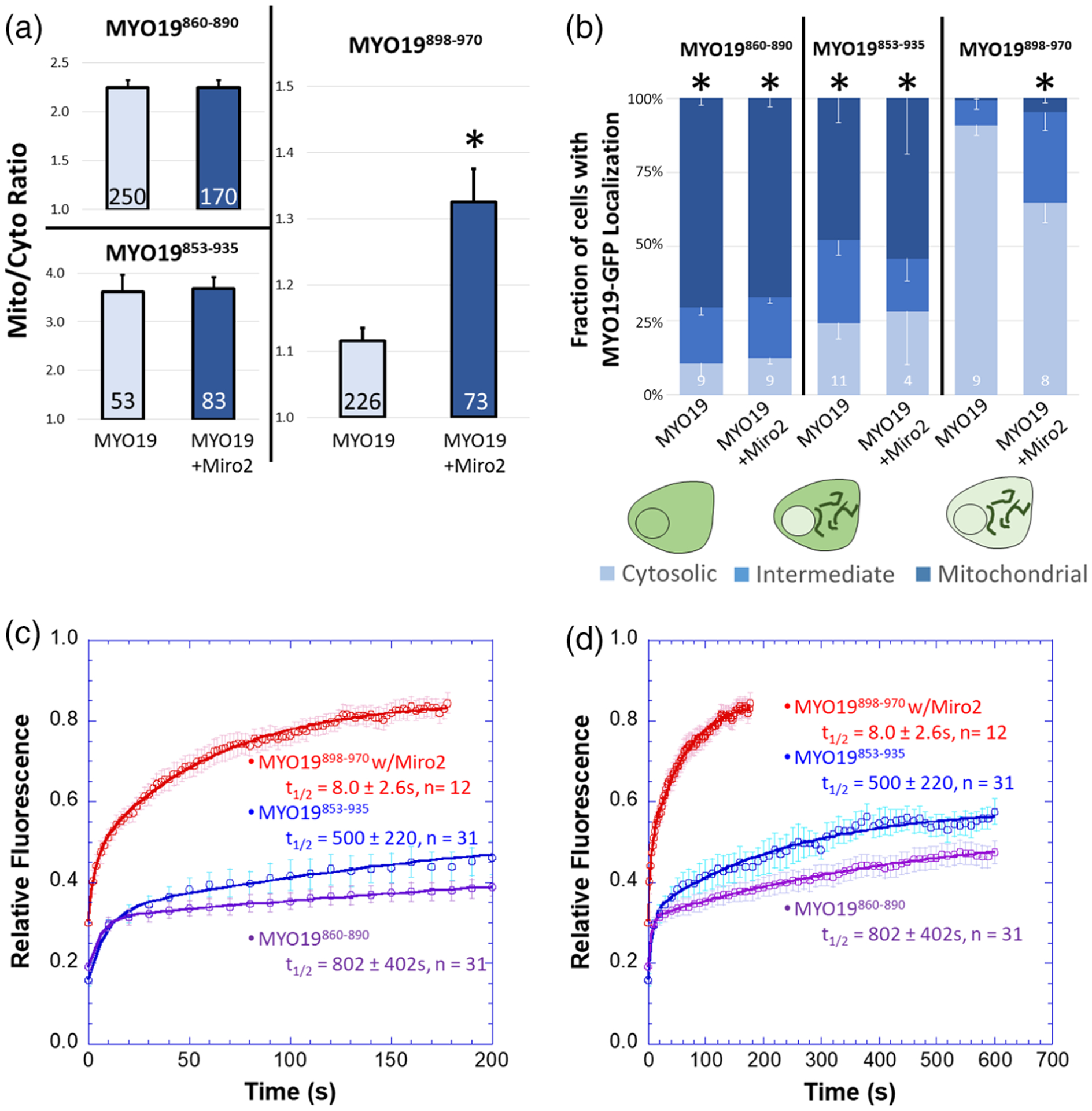FIGURE 2.

MYO19898–970 localizes to mitochondria in the presence of Miro2 and has more rapid exchange kinetics than constructs containing the putative membrane-insertion motif. (a) Mito/cyto ratio was used to quantify the enhancement of mitochondrial localization of MYO19-GFP constructs in the presence of mchr-Miro2. While coexpression of mchr-Miro2 with MYO19898–970-GFP enhanced the GFP-localization on mitochondria, mitochondrial localization of MYO19853–935-GFP and MYO19860–890-GFP were not enhanced by the coexpression of mchr-Miro2 (*p<0.001, t-test between MYO19898–970-GFP and MYO19898–970-GFP coexpressed with mchr-Miro2). (b) Coexpression of mchr-Miro2 decreased the fraction of the population of MYO19898–970-GFP expressing cells displaying a cytosolic staining pattern for GFP, but expression of mchr-Miro2 did not alter the population of MYO19853–935-GFP or MYO19860–890-GFP expressing cells with a cytosolic GFP pattern, further implicating Miro2 in localizing MYO19 to mitochondria (*p < 0.05, compared to MYO19898–970-GFP, Tukey analysis). (c) FRAP recovery of MYO19853–935-GFP and MYO19860–890-GFP expressing cells is relatively slow with a large immobile fraction, when compared to MYO19898–970-GFP in cells expressing mchr-Miro2, indicating that the mechanism of interaction with mitochondria for these two regions of MYO19 differs. (d) Same data as in (c), but plotted on a different time scale to show the complete time course for the longer recovery kinetics. FRAP kinetic parameters are listed in Table 1
